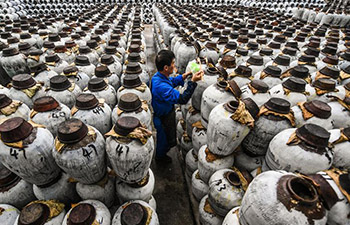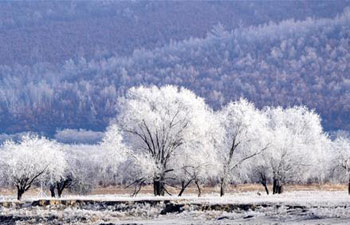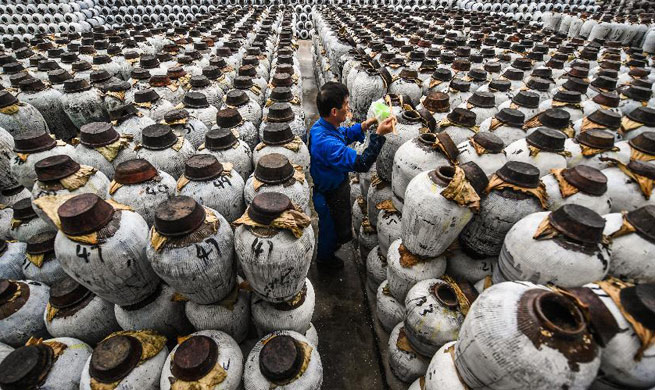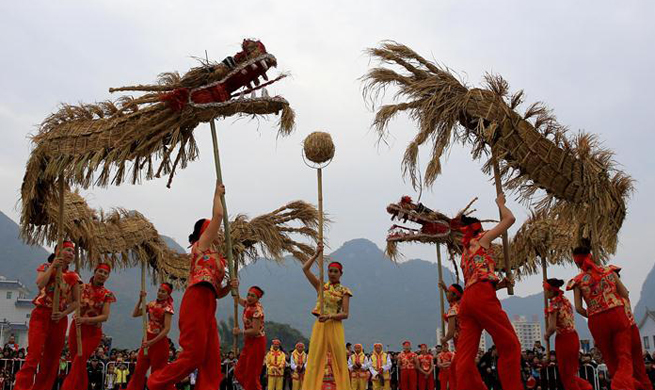by Xinhua writers Zhu Dongyang, Xie E
WASHINGTON, Nov. 7 (Xinhua) -- Ahead of U.S. President Donald Trump's first state visit to China on Thursday, a top U.S. trade leader, who has been doing business with China for more than three decades, has pointed out the many opportunities for cooperation between the businesses of the two countries, especially given China's rapid development and the United States suffering stagnation in some sectors.
Stephen A. Orlins, president of the National Committee on U.S.-China Relations, gave an example from his own experience to illustrate what he meant.
When he first went to China and took a train from Beijing to Jinan, a city in eastern Shandong Province, the journey would take anything from nine to 12 hours. That was in 1979. But when he did the same trip recently, it took less than two hours.
"But the trip from Washington to New York (three hours by train) has been the same over my entire life," he rued.
Orlins is a strong advocate of Chinese cooperation in U.S. infrastructure, especially given the Trump administration's 1 trillion U.S. dollar investment in infrastructure.
U.S. "DESPERATE" FOR INFRASTRUCTURAL INVESTMENT
Currently living in New York, he sees a "desperate need" for investment in infrastructure.
"I think China's experience in building its own infrastructure over the last decades has given it relevant experience and technology that would be applicable to our railways, subways, bridges, tunnels," the veteran official said in an exclusive interview with Xinhua.
The high-speed northeast rail corridor between Washington and Boston, for instance, can be built with Chinese technology and capital. "I think that would be hugely successful," he said.
In an earlier interview with Xinhua, Orlins said U.S. companies should engage with their Chinese counterparts outside China under the Belt and Road Initiative, calling the initiative to enhance trade, infrastructure and people-to-people links between Asia, Europe and Africa "tremendously beneficial" for the world and for the United States.
The Belt and Road, proposed in 2013, is building an overland Silk Road Economic Belt and a 21st Century Maritime Silk Road that will revive and expand the old Silk Roads that nurtured trade between Asia and the outside world in the past..
Since U.S. services and equipment in many areas have world advantages, Orlins advocated that Chinese companies, that serve as overall contractor for a project, should partner with major American companies such as General Electric or construction and project management firm Bechtel.
BOOMING PARTNERSHIP IN GREEN DEVELOPMENT
Orlins also envisioned China-U.S. cooperation on green development, possibly "the private sector of the United States working with the private sector in China and, to some degree, the Chinese government."
He disagreed with the U.S. government's insular stance that "we have given up too much in sacrificing things for the world, and ... need to take care of our home first."
"I personally don't agree with that," he emphasized.
Despite a cagey government, U.S. businesses, however, he added, remain committed to green development.
"So actually business coalitions and NGO coalitions will play a much greater role in the next three and a half years than they did previously, because (then) the U.S. government was leading," he said.
"Now U.S. businesses and NGOs all recognize that China is making enormous strides in this area, and ... in the environmental area ... cooperating with China is a great thing."
He pointed out the two main reasons for that. First, China was a huge market, and second, the Chinese government had recognized the importance of environmental protection.
"So people in the United States, NGOs and businesses recognize that President Xi Jinping's commitment to a beautiful China, to an environmentally sustainable China, is something good for the world, good for the Chinese people, and good for American business," he said.
(Xinhua reporters Gao Pan, Hu Yousong in Washington also contributed to the story)

















